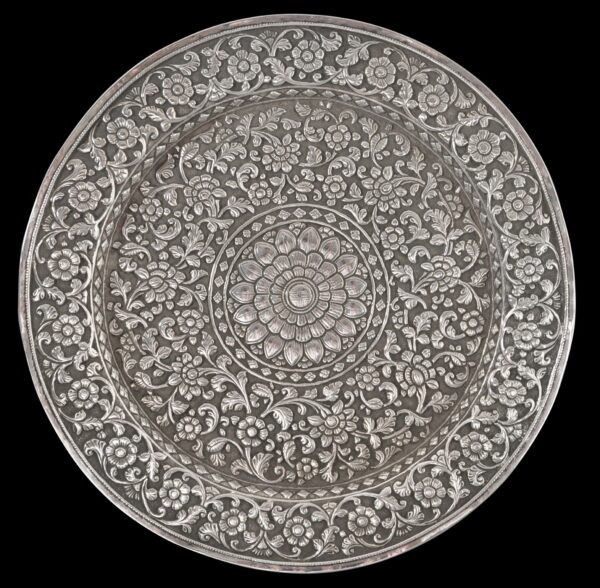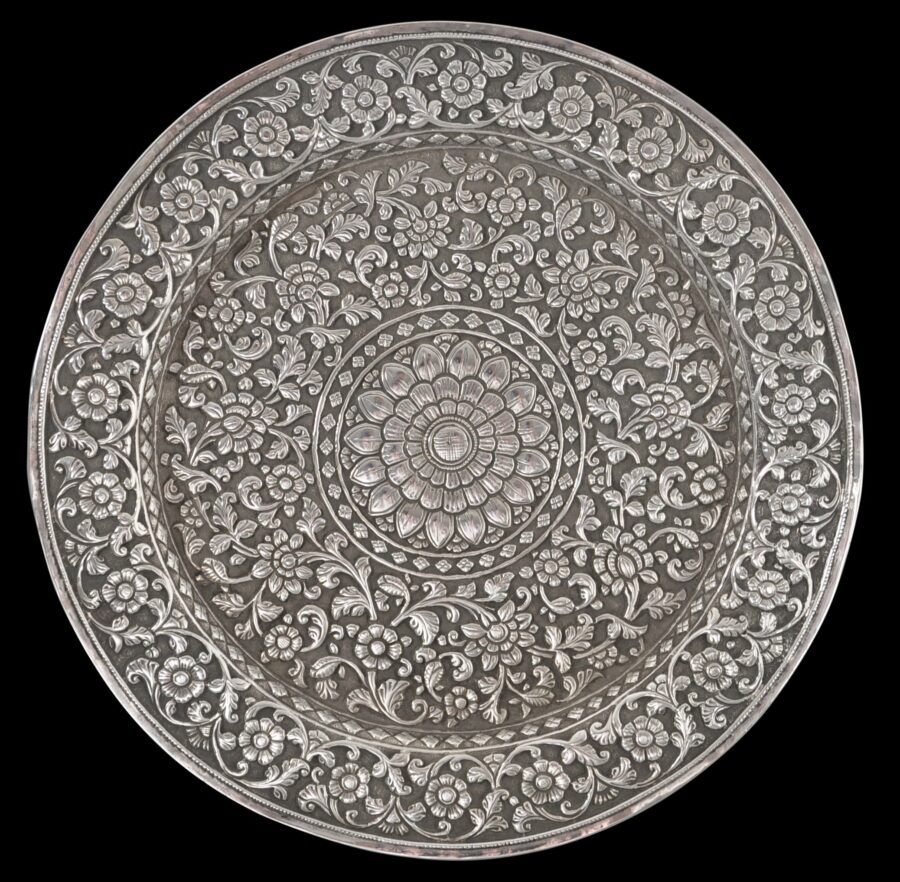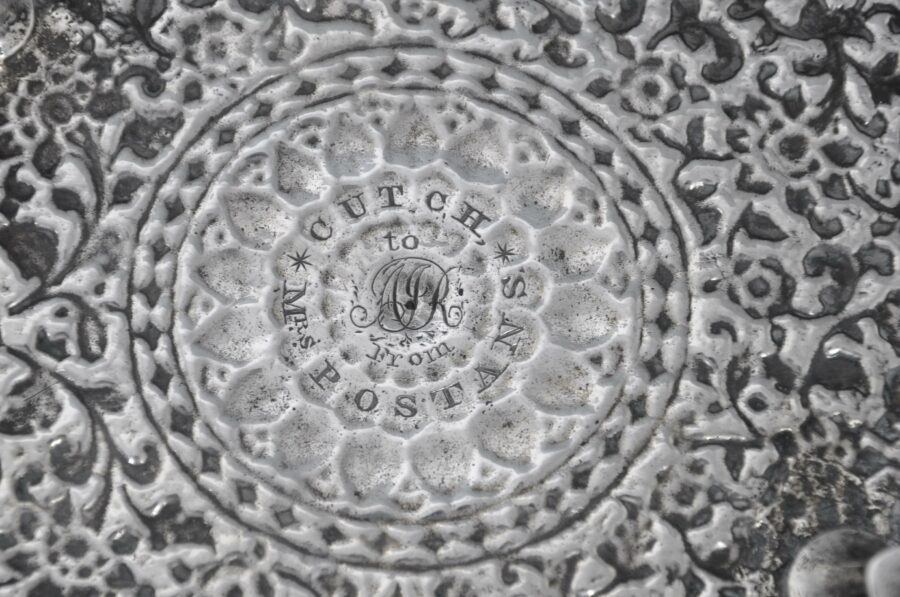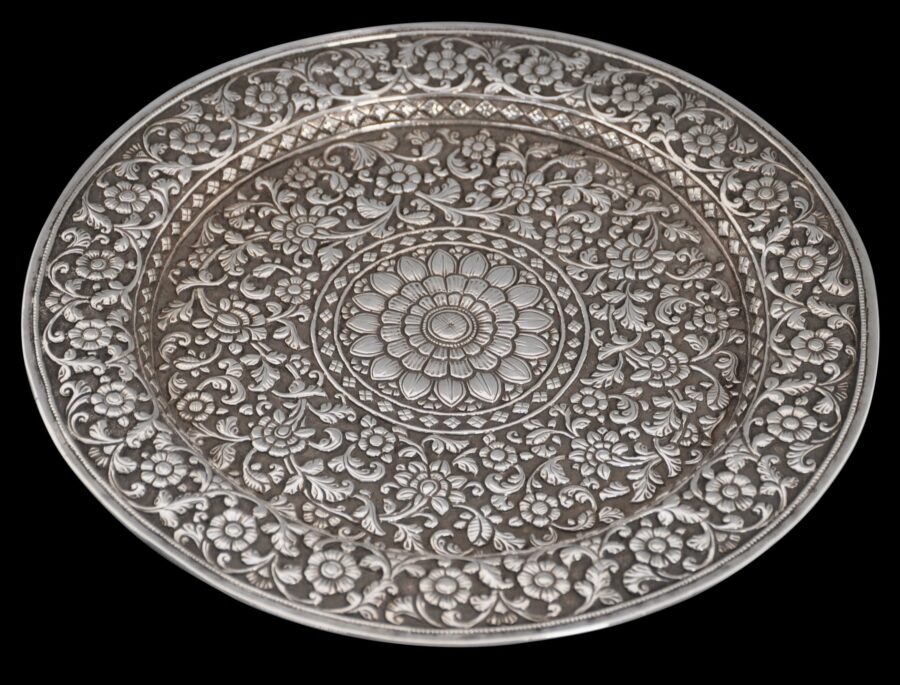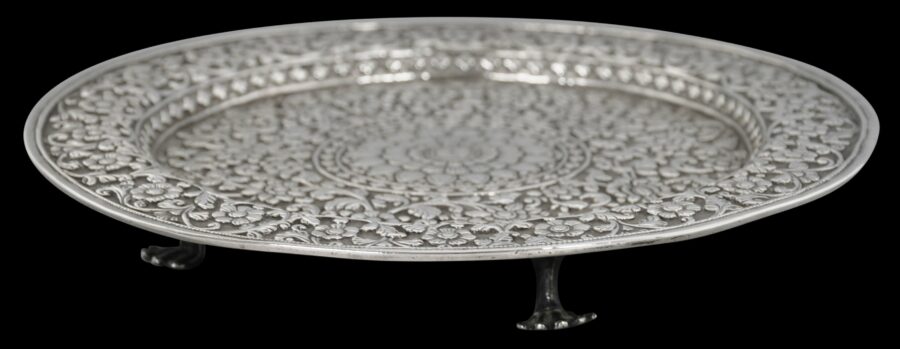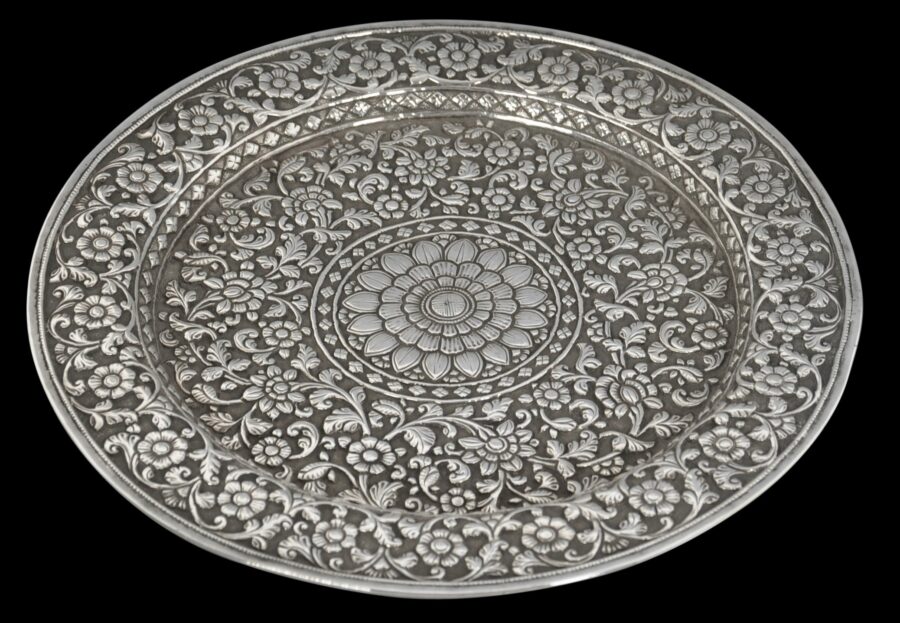This pleasing dish or salver which stands on four zoomorphic feet is decorated all over with floral and foliate scrollwork around a central flower medallion. The work is in lower relief compared with the chasing work that is synonymous with the colonial Kutch silverwork of the end of the 19th century.
The chasing on this plate is identical to that on a silver covered vase sold by us which was made prior to 1823. Like the vase, this dish is an important example of earlier colonial Indian silver that is not simply a facsimile of English of Scottish silver, but which incorporates a local and in this case Islamic, aesthetic, and which is also (largely) dateable.
Importantly, the reverse of the dish is neatly engraved with ‘For A I R, From Mrs Ponstans, Cutch.’
Marianne Postans, then better known by the public as Mrs Postans, was a young colonial wife who was also a keen diarist, writer and artist. Her book of her travels in Kutch and Western India, Cutch or Random Sketches of Western India, was published back in London in 1839. In the book she described the region’s people and their customs and traditions as well as the landscape. (‘Cutch’ was the earlier spelling of Kutch.)
She was born and raised in London. In 1833, at the age of 22, she married Thomas Postans (1808-1846), then an ensign in the 15th regiment of the Bombay native infantry, at St. George’s church, Hanover Square, central London. Shortly after, they set sail bound for Bombay on the H.C.S. Farquharson. In 1834, Thomas Postans was posted to Kutch, a western district of present-day Gujarat, India, where Marianne Postans made her notes and drawings that would become her book. Her time in Kutch coincided with the early development of local silversmithing industry, which by the end of the 19th century had become one of India’s most celebrated and prolific centres for colonial Indian silversmithing. Later, she published Western India in 1838, and then,
The dish here is in fine condition. It is also notably heavy for its size. It is not just a beautiful dish, but is important because of its illustrious provenance – a provenance which makes the dish one of the few examples of Kutch silver-smithing in the Kutch style that can be dated with a degree of accuracy and be shown to be much earlier than most extant examples of Kutch work. In this way it is an important piece in the story of the history of colonial Indian silverwork.
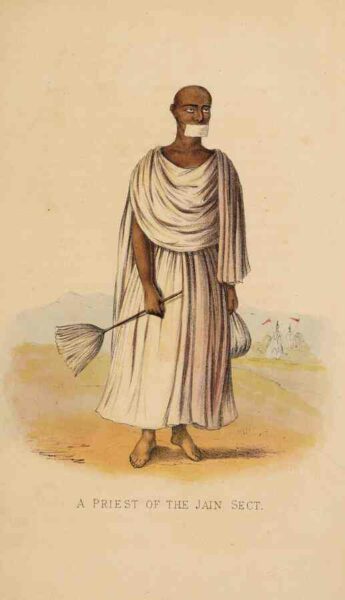
Above: Marianne Postans’ sketch of a Jain priest.
References
Dehejia, V., Delight in Design: Indian Silver for the Raj, Mapin, 2008.
Postans, M., Cutch or Random Sketches of Western India, 1839.


